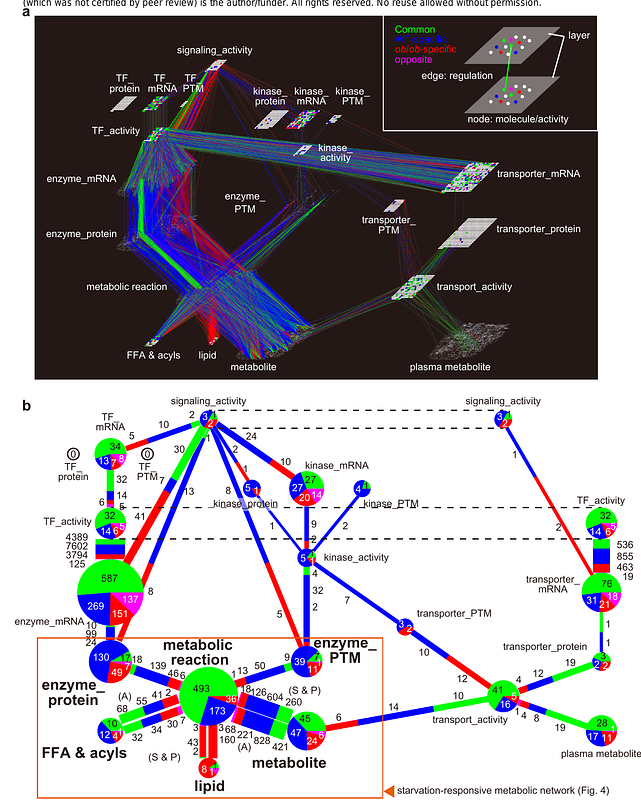Structural robustness and temporal vulnerability of the starvation-responsive metabolic network in liver of healthy and obese mice

Structural robustness and temporal vulnerability of the starvation-responsive metabolic network in liver of healthy and obese mice
Morita, K.; Hatano, A.; Kokaji, T.; Sugimoto, H.; Tsuchiya, T.; Ozaki, H.; Egami, R.; Li, D.; Terakawa, A.; Ohno, S.; Inoue, H.; Inaba, Y.; Suzuki, Y.; Matsumoto, M.; Takahashi, M.; Izumi, Y.; Bamba, T.; Hirayama, A.; Soga, T.; Kuroda, S.
AbstractAdaptation to starvation is a multi-molecular and temporally ordered metabolic process to optimize fuel usage, that could be impaired in obesity. However, how the healthy liver adapts to starvation by temporally coordinating various molecules, and how the process is disrupted in obesity have not been elucidated. Here, we measured time course multi-omic data in the liver of wild-type (WT) and leptin-deficient obese (ob/ob) mice during starvation and constructed the starvation-responsive metabolic network. The hub molecules of the network in WT mice, including ATP and AMP, were not responsive in ob/ob mice, however the network structure was maintained in ob/ob mice. The molecules in the network were temporally ordered through metabolic process driven by the hub molecules and co-regulated, both were disrupted in ob/ob mice. Thus, the starvation-responsive metabolic network is structurally robust, but temporally vulnerable by the loss of responsiveness of the hub molecules, including ATP and AMP, in obesity.


